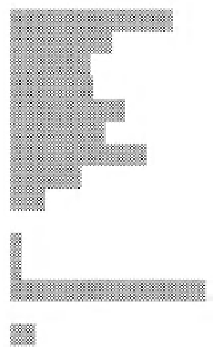Geology Reference
In-Depth Information
rates. The circulation of seawater through the
permeable skeletal 'interruptions' likely promoted
lithifi cation relative to the less permeable and
fi ner-grained hemipelagic 'background' sediments.
The onset of platform progradation in the late
Pliocene rapidly loaded the partially cemented
'interruption' intervals and promoted shear and
extensional fracturing (see model summarized
in Fig. 10). Experimental rock mechanics has
shown that compressional loading can pro-
duce conjugate shear fractures with inclinations
ranging from 40° to 70°, as well as near-vertical
extensional (axial splitting) fractures. The inclina-
tions of the fracture planes in core Clino are
generally consistent with the features generated
from laboratory experiments.
Cumulative fracture length (cm) per interval
40
0
10
20
30
50
60
70
375
378
381
384
387
390
393
396
399
402
405
408
411
414
417
420
423
426
429
432
435
438
441
444
447
450
453
456
459
462
465
468
471
474
477
480
483
486
489
492
SSB-D
Upper
fracture
interval
Laboratory support for loading and early
fracturing
Middle
fracture
interval
Uniaxial deformation experiments of the two
Clino 'interruption' samples (at a depth of 440
and 447 m) showed brittle behaviour at labora-
tory strain rates of ~10 MPa (effective pressure).
The resultant brittle failure produced a single,
steeply inclined, through-going fault (D. Olgaard,
personal communication). This brittle fractur-
ing is consistent with the current overburden
pressure of a 425 m rock column (at 2.1 g cm
3
),
within today's depth range of the fractures. If
fracturing occurred after the progradation load
(275 m column) was emplaced (~1.5 Ma) it is rea-
sonable to assume that the 'interruption' horizon
was at an earlier stage in its lithifi cation his-
tory and thus susceptible to early load-induced
fracture.
Lower
fracture
interval
SSB-E
Ancient analogues for loading and early
fracturing
Fig. 6.
Cumulative fracture length (total fracture length
in centimetres) per 3 m interval. A slight trend of decreased
fracture density with depth can be observed in these his-
togram plots. This trend may be a result of greater cemen-
tation at the sequence boundaries that cap the upper and
lower interval, or simply related to the higher permeability
in the skeletal 'interruptions'.
Documentation of early fracturing on carbonate
platform margins is rare. One example from a
prograding margin is the Permian, Capitan reef
of west Texas and southeast New Mexico where
marine cement and fossils fi lling fractures indicate
early fracturing (Saller, 1996; Kosa & Hunt, 2006).
The Capitan reef also shows a conjugate fracture
set oriented perpendicular to the shelf margin.
The fractures parallel to the Capitan reef front are
generally steeper than Clino, and are concentrated
in reefal facies. Differential compaction and basin-
ward tilting (extension) are invoked to explain
the steep axial fractures (Saller, 1996; Harwood &
Kendall, 1999; Hunt
et al
., 2003; Stanton & Pray,
2004). Although a different setting, this Permian
below a non-depositional surface (SSB-D). This
period of non-deposition (3.5-3.0 Ma) may have
promoted cementation within the skeletal sedi-
ments of sequence
e
and at the top of sequence
f
.
Malone
et al
. (2001) dated similar Quaternary
'lowstand' deposits and corroborated the inter-
pretation that the better cemented coarser-grained
slope deposits are indeed deposited during times
of lowered sea level and reduced sedimentation














